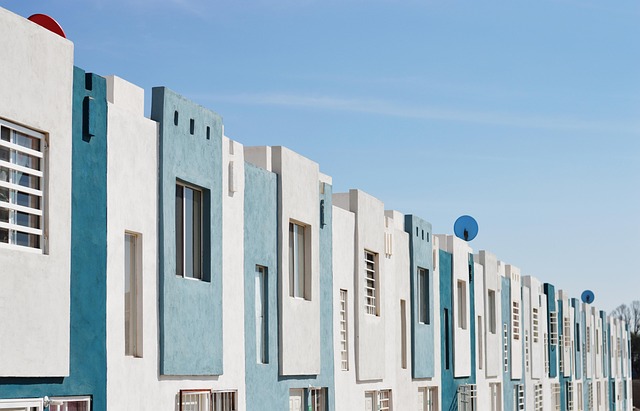Glulam (glued laminated timber) is a cutting-edge structural material composed of bonded wood veneers, offering enhanced design flexibility, time efficiency, and environmental sustainability. Its structural excellence stems from high-quality timber, advanced laminating techniques, and precise gluing methods, ensuring exceptional strength and durability. Glulam's rapid construction speed, precision manufacturing, and innovative design software make it a popular choice for eco-friendly infrastructure projects, offering cost-effective and low-maintenance building solutions. With its versatility and unique design capabilities, glulam is revolutionizing modern construction.
“Glulam, a modern wonder in structural engineering, is revolutionizing the construction industry. This innovative building material, composed of glued layers of wood, offers unparalleled strength and versatility. In this comprehensive guide, we explore the fundamentals of glulam construction, from its basic principles to advanced design techniques. We delve into real-world applications, highlighting its impact on contemporary architecture, and conclude with an outlook on future trends shaping glulam’s prominent role in sustainable construction.”
- Understanding Glulam Construction: The Basics
- Key Factors Ensuring Glulam Structural Integrity
- Advanced Techniques for Glulam Design and Strength
- Real-World Applications of Glulam in Architecture
- Future Trends Shaping Glulam's Role in Construction
Understanding Glulam Construction: The Basics
Glulam, or glued laminated timber, is an innovative structural material made from layers of wood veneers bonded together with strong adhesives. This construction method involves gluing multiple thin strips of wood, known as laminates, together to form a single, incredibly strong and stable component. Each layer adds strength and rigidity, allowing for the creation of complex shapes and large-span structures. By utilizing glulam, architects and engineers can achieve elegant designs that would be challenging or impossible with traditional building materials.
The process of glulam construction offers significant advantages in terms of speed and efficiency. Glulam panelization enables quick assembly and precise fitting, reducing on-site construction time. This method is particularly beneficial for projects with tight deadlines, as it allows for off-site fabrication and rapid installation once the site is ready. Moreover, glulam’s environmental benefits make it an attractive option for those seeking a green building solution, as it is a renewable resource that contributes to sustainable construction practices.
Key Factors Ensuring Glulam Structural Integrity
The structural integrity of Glulam (glue-laminated timber) relies on several key factors that contribute to its strength and longevity. First, the quality of materials is paramount; using high-grade timber free from defects ensures optimal performance. Advanced laminating techniques play a crucial role in enhancing glulam’s structural integrity by efficiently distributing load across multiple layers, resulting in exceptional strength-to-weight ratios. Proper gluing methods are another vital component, as they secure each layer, making glulam incredibly durable and resistant to warping or splitting.
Additionally, the design considerations for glulam structures should account for span requirements, load types, and environmental factors. The precision of manufacturing and assembly is also significant in maintaining structural integrity. Glulam’s inherent advantages, such as its fast construction speed and efficiency, make it an ideal choice for sustainable infrastructure projects, where rapid erection minimizes on-site waste and reduces carbon footprints. Its long-lasting properties further contribute to cost-effective and low-maintenance building solutions over the lifespan of a structure.
Advanced Techniques for Glulam Design and Strength
The structural integrity of Glulam (Glued Laminated Timber) is enhanced through advanced design techniques that leverage its inherent strength. Engineers now employ sophisticated modeling software to optimize glulam for specific projects, ensuring efficient load distribution and maximizing structural performance. This digital precision allows for innovative designs, particularly in the realm of sustainable infrastructure, where glulam’s eco-friendly nature complements its structural advantages.
Glulam manufacturing quality control is a meticulous process that ensures each component meets stringent specifications. From raw material selection to precise gluing techniques and careful panel assembly, every step is carefully monitored. This rigor results in glulam panels with exceptional dimensional stability and strength, as outlined in their specific dimensions and specifications. These high-quality standards contribute to the long-term durability of glulam structures, making it a preferred choice for modern construction projects.
Real-World Applications of Glulam in Architecture
The versatility of glulam (glued laminated timber) has led to its widespread adoption in various architectural projects worldwide. This innovative structural material is particularly prized for its ability to span long distances with minimal support, making it a go-to choice for modern, open-plan designs. From residential homes to commercial buildings, glulam’s aesthetic appeal and structural integrity are transforming the way we think about wooden construction.
One of the key advantages of glulam lies in its potential for panelization, streamlining construction processes and reducing material waste. This technique is especially valuable in commercial projects where large, complex structures demand efficient solutions. Moreover, glulam’s ability to accommodate intricate geometric designs opens up a world of creative possibilities for architects and engineers, enabling them to craft unique and sustainable buildings that stand out.
Future Trends Shaping Glulam's Role in Construction
The future of construction is set to embrace innovative materials and designs, and glulam (glue-laminated timber) is poised to play a pivotal role. As the industry leans towards more sustainable practices, eco-friendly glulam alternatives are gaining traction, offering an environmentally conscious solution while maintaining exceptional structural integrity. This shift towards sustainability doesn’t compromise on performance; rather, it opens doors for glulam to be explored in diverse applications, including curved structures that were previously challenging to achieve with traditional building materials.
The versatility of glulam is expected to expand its presence in commercial buildings and beyond. Architects and engineers are increasingly recognizing the aesthetic appeal and functional benefits of glulam, such as lightweight yet robust construction, fast installation, and reduced waste. These trends suggest a bright future for glulam, where it will not only contribute to environmentally friendly practices but also shape the way we build, offering both structural integrity and design flexibility.
Glulam, with its exceptional structural integrity, is poised to continue shaping the construction landscape. As advancements in design and engineering techniques further enhance its strength and versatility, glulam will likely become an even more prominent feature in modern architecture. Its real-world applications are already demonstrating durability, aesthetics, and sustainability, making it a game-changer in building design. Looking ahead, future trends suggest increased adoption of glulam in various structures, from residential to commercial projects, offering builders and architects a reliable and innovative solution for sustainable construction.







